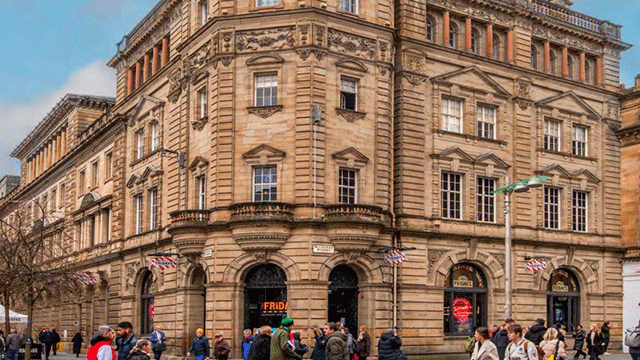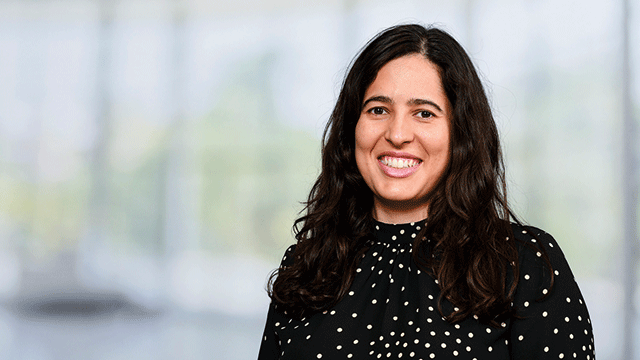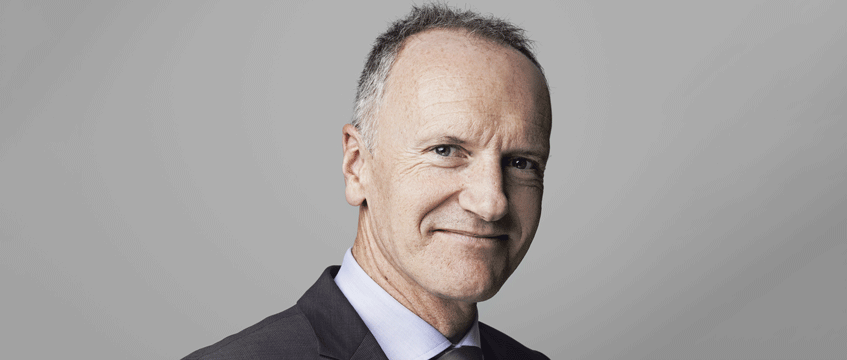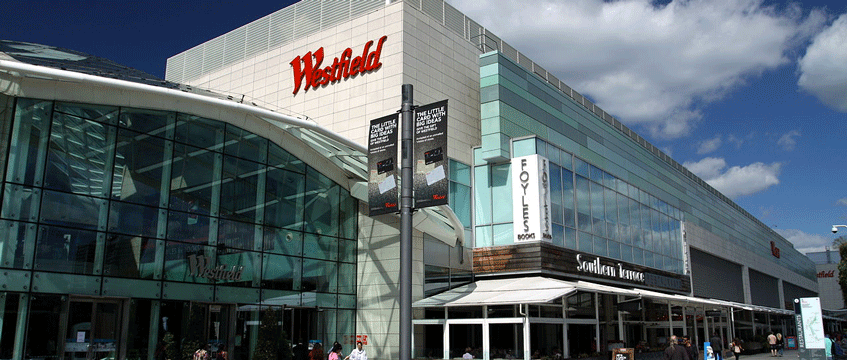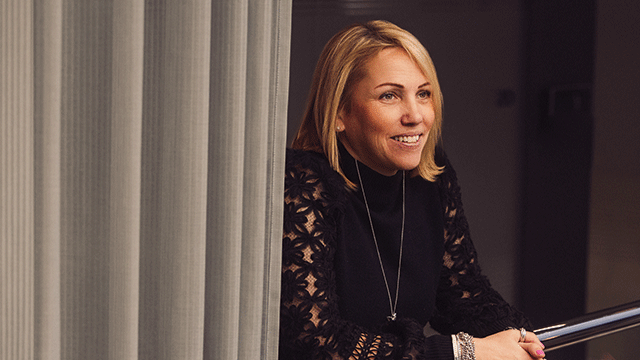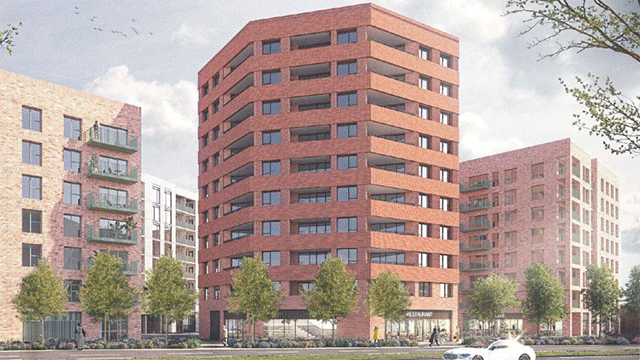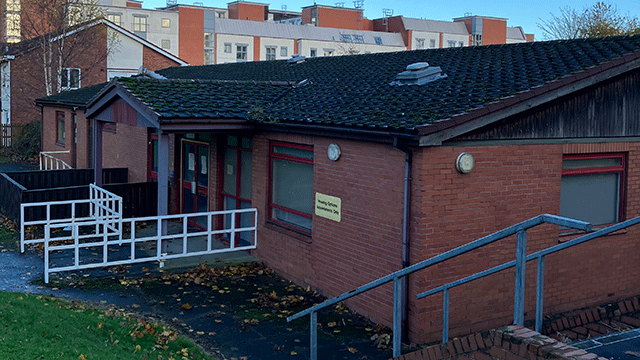As Unibail-Rodamco’s $24.7bn (£18bn) deal to take over Westfield Corporation nears the finish line, Pui-Guan Man sits down with Unibail-Rodamco chief executive Christophe Cuvillier to discuss the proposed merger, his perspective on how retail will evolve and thoughts on recent consolidation efforts in the shopping centre sector.
Turmoil in the retail industry in the UK and US has left real estate companies shaken, but French property firm Unibail-Rodamco is making a big bet on both markets as it closes in on its US$24.7bn (£18bn) takeover of Westfield Corporation.
It is a deal that Christophe Cuvillier, the affable chief executive of Unibail-Rodamco, is feeling “very positive” about when he meets EG on a sunny afternoon at the company’s pristine headquarters in Paris.
Earlier that same morning, more than 94% of Unibail-Rodamco’s shareholders gave the proposed merger the go-ahead, bringing it a step closer to creating a shopping centre giant with assets valued at €62bn (£54bn).
If the deal secures approval from Westfield’s shareholders on 24 May, it will herald the largest transaction in Australia across all sectors, and the largest for a French company in the US market in the past five years.
It will be listed in Amsterdam and Paris on Euronext, along with a secondary listing on the Australian Securities Exchange.
Unibail-Rodamco operates 67 assets across 11 countries. The addition of Westfield will bring its portfolio to 102 assets across 13 countries, with a combined development pipeline of €13bn (£11bn).
UK opportunities
For Cuvillier, the UK holds a wealth of opportunities despite the ongoing turmoil in retail. He remains unfazed by the wave of company voluntary arrangements.
“I don’t see CVAs affecting Westfield, because they are the two best assets in the UK shopping centre industry and modestly speaking, in the whole of Europe – they are even better than our own top assets,” he admits.
He references H&M’s upsizing in 2017 and Zara’s new digital store concept launch last week as examples, adding: “What I see at Westfield are the best brands expanding their stores. When you look at Stratford City, the list of brands that want to increase their store sizes is huge.”
What do retail mega mergers mean for the 2018 shopping centre market?
Moreover, the regeneration of Westfield London’s and Stratford City’s surrounding areas presents significant opportunities for growth.
“What is developing in Shepherd’s Bush and Stratford City is fascinating. In Shepherd’s Bush you have more residential, offices, hotels and college campuses – it is becoming so well connected, and there is growth potential there. The same goes for Stratford City. Brexit or no Brexit, these areas will be growing,” he observes.
Cuvillier acknowledges there may be other opportunities in the UK, but these are not on the map, nor do they factor in with its combined development pipeline, which includes Westfield’s projects in Croydon and Milan.
He says of its existing pipeline: “It’s a lot of things to do and a lot of room for growth.”
Consolidation in the sector
In the months following the announcement on 12 December of the merger with Westfield, run by Australian billionaire and Westfield Corp co-founder Frank Lowy and his sons, it momentarily seemed to herald an increase in consolidation in the shopping centre sector.
French operator Klépierre’s attempts to acquire Hammerson in March, before they fell through in April alongside Hammerson’s proposed merger with Intu, had signalled the potential emergence of a sizeable rival for Unibail-Rodamco.
However, the prospect of a merger between Klépierre and Hammerson was not something that concerned Cuvillier.
How to future-proof shopping centres
“Our deal was already well underway,” he explains. “It was announced [in] December, long before March, so it didn’t bother me. I was so concentrated on our own deal that I didn’t really have time to [pay attention] to it.
“What’s very important is that our deal was prepared very thoroughly for the past three years, was friendly, and unanimously recommended by both boards and Westfield’s founding family. It was also kept 100% confidential until 12 December, when we decided to announce it – I think this was very important. Only friendly deals work in real estate.”
Cuvillier says the company has had the opportunity to make an offer on “a lot of interesting European companies,” but for the next few years it will remain “100% focused” on the Westfield merger.
“Before Westfield, the last big opportunity was the merger between Unibail and Rodamco 10 years ago, so ask us again in 10 years,” he quips.
“By definition I never rule out anything, but it has to make sense strategically. We have a lot of projects under consideration that are not in our official pipeline, which will mature and join the pipeline to generate growth from within, not through external acquisitions.
“But this [merger] was a great opportunity to acquire the best brand, portfolio and team on top of that, so it was an exception to the rule.”
A shared strategy
Unibail-Rodamco and Westfield will strategise around a shared vision of how the future of retail will evolve, divided into three categories: online retail; proximity, including travel hubs; and experiential shopping to attract footfall.
A unified approach to the latter may prove slightly tricky, since a key difference in Unibail-Rodamco’s and Westfield’s respective portfolios are the types of anchor tenants each of their shopping centres are structured around.
In continental Europe, complexes are mostly anchored by food retailers and hypermarkets, while in the UK and US they are anchored by department stores.
While it could be a cause for concern, Cuvillier says the lines between these are blurring, pointing to the launch of a Galeries Lafayette store in the extension of one of Unibail-Rodamco’s Paris shopping centres, Carré Sénart, in October.
“We do have department stores in our shopping centres – they are very selective in continental Europe, so it’s great to have them,” he says.
“Department stores are important in Europe, [even if] the general anchor is food. And in the UK you have brands like Waitrose, and Wholefoods is opening stores in shopping centres in the US as well.”
Meanwhile similarities can be found in prioritising investment in organising events to attract visitors, as well as in their cinema venues.
“Westfield London has the number one cinema in the UK. And Forum des Halles which we operate in Paris, is the top cinema in France. It’s the same vision; looking at entertainment, experience, more space given to dining and events,” says Cuvillier.
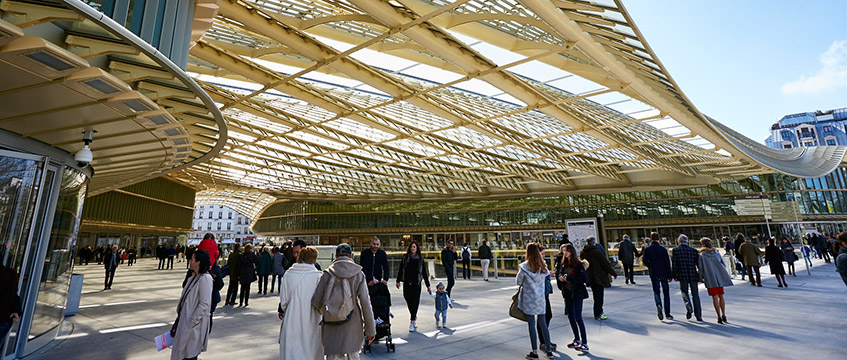
The leadership team, which will remain headquartered in Paris, will comprise current management board members of Unibail-Rodamco and selected Westfield representatives.
Among these will be Peter Miller, current chief operating officer of UK and Europe for Westfield, who will become chief operating officer of the UK and Italy as well as lead the Benelux operations.
Unibail-Rodamco chief operating officer Jean-Marie Tritant will become president of the US business, while Westfield senior executive vice president development Peter Huddle will become chief operating. Because of the lack of geographical overlap, there will be no redundancies.
The US
Unibail-Rodamco plans to shed €3bn of its non-core assets, which includes offices, in the coming years as part of its existing five-year strategy.
While Cuvillier would not be drawn on potential disposals arising from the merger, he pointed to a possible review of Westfield’s 18 regional malls in the US, which represent 15% of its portfolio by value.
“Some of these might be exposed, and we’ll be looking into that because their growth potential is probably not as high as the flagships,” he says. “They don’t correspond fully to our vision of retail, so we’ll be looking at potentially divesting, but there is no disposal in our business plan and our underwriting [of] the acquisition.”
Unibail-Rodamco has made 27 shopping centre disposals between January 2013 and December 2017 – shrinking to 67 from 82 after adding 12 assets. Its portfolio value, however, during the five-year period increased to €43bn from €29bn.
What’s in a name?
The French landlord owns huge shopping centres, just as Westfield does. Among these, Les Quatre Temps in Paris posted 42.4m visitors at its 227 shops in 2017, while Forum des Halles has 152 shops and recorded 42.3m visits.
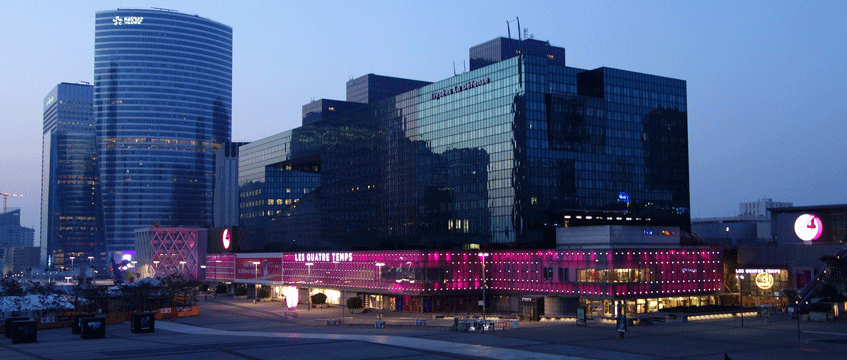
But even in its domestic market Unibail-Rodamco is not a widely recognised name, despite being Europe’s largest listed commercial property owner.
Nearly all of its flagship assets have different names. Westfield, however, has established one of the most recognisable shopping centre brands in the industry.
Discussions concerning the branding for the merged company continue, but it evidently plans to maximise its use of the Westfield name.
“We value Westfield for the fact it is really the only international brand that is recognised as such,” Cuvillier elaborates. “It will take time because they have historical names, but we will probably keep the original name and add ‘Westfield’ to it as a recognition of their quality.”
Customer experience targets
The dynamics with retailers around the negotiating table are set for further change with the merger, with the broad expectation that the deal will open the gates for expansion to new international markets.
“What will put us in an interesting position to negotiate is to offer partnerships. Europe as seen from the US can sometimes be a bit frightening, because of its different currencies, languages and labour laws, so having an entry point is good,” says Cuvillier.
“If you add the UK to this – a natural entry point for US retailers into Europe – it makes both my life and their lives easier. A lot of French retailers and others in Europe are telling me how excited they are about this deal, because they trust it will make their expansion into the US easier. We’ll coordinate this in a transatlantic way.”
Westfield races against the clock to fill new extension
To stay ahead of the pack, the company has also established a strict brand concept “rotation”, setting out a target of 10% new retail concepts in each shopping centre every year, which consist of either new entrants or existing brands upscaling their offerings.
Through this, the shopping centre owner counts the respective debuts of Apple in continental Europe and Nespresso stores in France among its highlights, as well as the first three Tesla stores in shopping centres in the country.
It also introduced Michael Kors in the Czech Republic and in Poland, and has leased space to Mercedes to open its first store in a shopping centre in France, dedicated to electric and hybrid cars.
In a bid to continue this momentum, the shopping centre operator last year partnered with UK start-up Brandwatch to source brands with a burgeoning social media presence. Additionally, it has a dedicated team that scouts retailers in different markets by travelling to shopping destinations and through roadshows.
The evolution of retail
The French shopping centre owner has an in-house think-tank of architects and designers to map out the shopping centre of the future.
Despite this, Cuvillier himself is unsure of what the coming decade holds for retail. “If I was asked this 10 years ago, I would probably have been wrong, because I never would have thought Amazon would have opened book stores,” he confesses.
“As a former chief executive of [book retailer] Fnac, I never would have bet as a competitor that it would, but it did. I did not think so many car manufacturers would want to open flagships within shopping centres either, or self-standing cosmetic brands wanting to open stores.”
But for Cuvillier, a few things are certain: the entertainment, dining, cosmetics, sportswear and car sectors will grow, possibly at the expense of other categories.
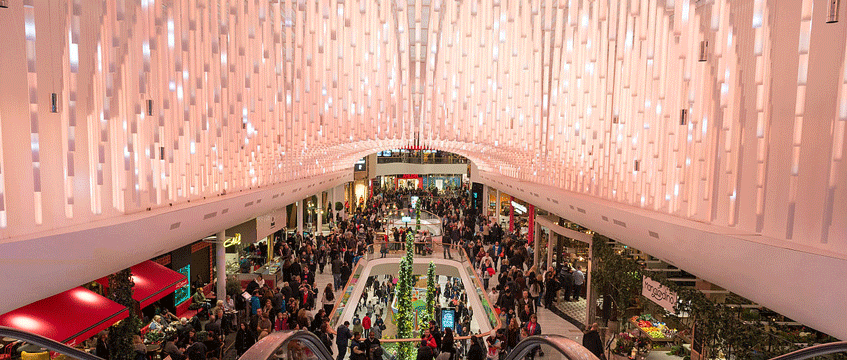
Staying reactive to changes is crucial, even if it comes at a cost. Cuvillier references an instance in which 15 months before opening the Mall of Scandinavia in Stockholm, he overhauled its proposed flooring that had been planned for five years to replace it with white marble.
It was a decision he stands by: “I was not convinced after seeing the mock-ups they were showing, and I made the right decision. A normal developer would never have done that.
“It cost a lot of money but it will make more in future – it was a worthwhile investment that improved both the customer experience and preference for the shopping centre [as a destination].
“It’s more and more about customer experience. For long-term developers and operators like ourselves and Westfield, it is about the best product you can imagine for the next 20 years for your customers. An institutional investor or developer would do the most efficient project for today, but we have to do the most interesting project for tomorrow, because we will be operating those centres.”
Learning from consumer-facing industries
Cuvillier leans on learnings from other industries and applying them to the shopping centre sector – in a significant nod to the hotel sector, he invented a “four-star” service commitment for Unibail-Rodamco in 2012, after he joined the company in 2011 as its chief operating officer.
Within this, an external company audits each of its shopping centres based on various qualities, from access, comfort and toilets to employee uniforms. Based on these, they are awarded four-star status.
“The world is changing – you need to change your shopping destinations at the same level. And it’s difficult in the world of real estate, you’ve got walls and people in place. This is what active management does – making your product as fresh as it needs to be and fresher than that of your competition,” he says.
Is there more M&A activity to come in 2018?
His own customer-facing background has also shaped Unibail-Rodamco’s positioning as a business-to-consumer company, rather than a business-to-business organisation.
Cuvillier began his business career as a sales trainee at luxury brand Lancôme, part of L’Oréal, in 1986, rising up the ranks to become chief executive of L’Oréal’s luxury division in France in 1998.
In 2000, he joined luxury group Kering as chief operating officer of marketing and products at subsidiary Fnac, where he returned to take the role of chairman and chief executive in 2008 after leaving in 2005 to become chief executive of fellow Kering brand Conforama. He then joined Unibail-Rodamco in 2011.
“The reason why I was hired was for my consumer background. It’s not just about real estate, but about real estate for consumers – whether for shopping centre visitors or office users – put yourself in the skin of your visitors,” he says.
He was clearly on the right track – two years after joining Unibail-Rodamco, Cuvillier succeeded Guillaume Poitrinal as chairman and chief executive of the real estate firm.
Considered expansion
Going forward, Cuvillier’s path to growth as a merged company involves a clear strategy devised by catchment area, rather than looking at expansion by country.
“If there are opportunities we’ll look at them, but we prefer to be strong in fewer places than average in more places. It makes no sense in this world to be average. You need to be the best,” he adds.
“Our strategy is the best for us – it’s what we’re best at, and we have the best portfolio for it in the best catchment areas. We are not in the outlet centre sector, but there is huge potential there. This is what [the likes of] Value Retail and MacArthur Glen are best at,” he says.
Cuvillier cites Mercialys – formerly the real estate arm of French retail group Casino, which has since reduced its majority stake in the business – as another example of how a property firm can play to its strengths.
“They have changed since, but their trademark was “l’esprit voisin” – the neighbour spirit. This was exactly the right positioning for them: they had shopping centres in secondary cities, and they wanted to be your neighbour.
“This corresponds to the proximity [aspect] that is fast-growing in retail – the everyday shopping centre. This was a great positioning,” he remarks. “The key is, be very clear on what you want to do, and be the best at it.”
While merger discussions seem to have progressed rapidly since the announcement in December, the wheels were first set in motion in 2014, when the Unibail-Rodamco team first heard Westfield was spinning off its Australian and New Zealand operations from their US and UK operations, into the Scentre Group.
The end of shopping centres?
“Being long-term admirers of Westfield, because of its London and Stratford City centres, we started thinking it would be a good idea to get in touch with them and see whether a combination would make as much sense for them as it made sense for us. That is where it all started,” he says.
“There was a natural strategic fit between what Unibail was doing – concentrating more and more on a reduced number of shopping centres but of excellent quality and large size – and refocusing on customer experience and differentiation, which is exactly what Westfield have been doing. So it was natural to approach them.”
In late 2014, Cuvillier met with Lowy, who he describes as “an approachable, wise and fascinating man”. The groundwork for discussions was laid and the pair stayed in touch; in September 2017, work on the merger began in earnest.
Cuvillier credits the strength of Unibail-Rodamco’s balance sheet as one of the key drivers in pushing the deal through, having reduced the company’s average cost of debt to 1.4% from 3.9% during 2010 to 2017, and extended average maturity to 7.2 years from 4.3 years during the same timeframe.
He also puts it down to the “right timing” for the Lowy family, which wanted to find a long-term solution for the company.
“I think what is very important is that Unibail-Rodamco is offering exactly that,” he says. “We have no unique brand, so we can keep and expand the Westfield brand. Its brand in two European countries – in the UK and in future, Italy – will go on to 14 countries in one go, which is very important for the legacy of the Westfield brand.”
“I guess they also trust us, which is very important. It’s their baby. The brand was created by Frank Lowy back in 1960. It’s his creation – it’s very important and we’re going to take good care of it, I can tell you.”
To send feedback, e-mail pui-guan.man@egi.co.uk or tweet @PuiGuanM or @estatesgazette





